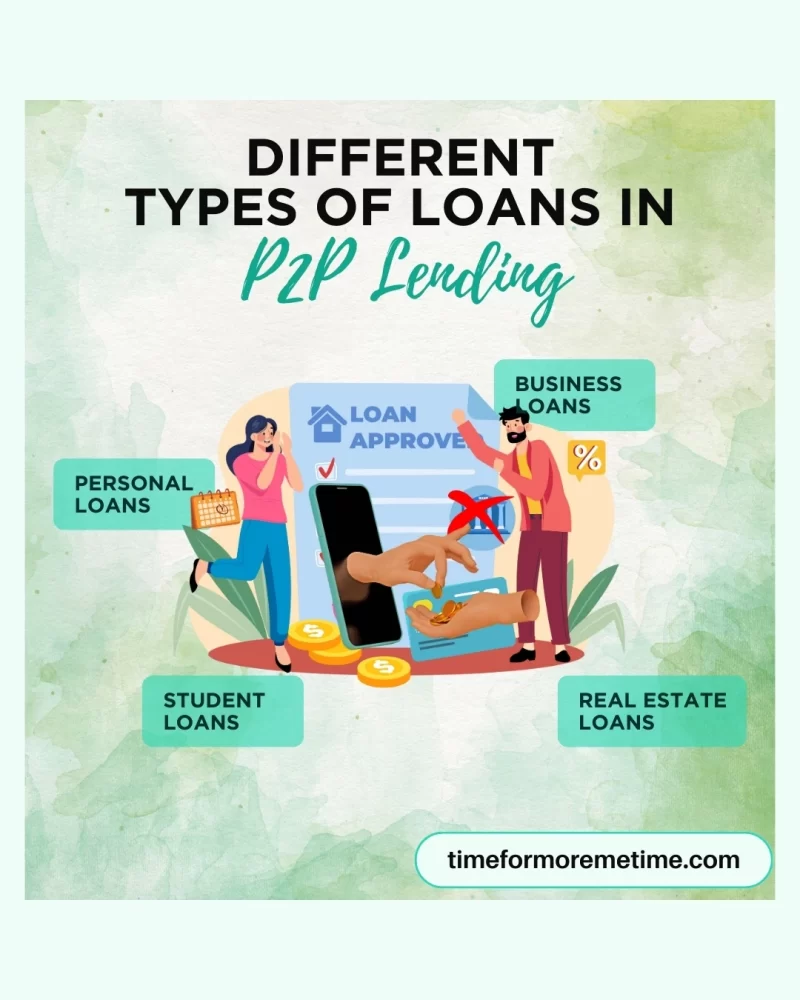P2P lending, or peer-to-peer lending, is a term you might have seen in ads or online. Some people say it can be a good way to make money without much effort, but what is it really? In this discussion, I will explain what P2P lending is and how it works. Let’s get started!
What Is P2P Lending

Peer-to-peer lending is mainly an online service that connects borrowers and lenders through a digital platform. It allows people and organizations to lend or borrow money directly to others outside their immediate circle without using banks, which typically manage depositors’ money and lend it out while sharing some interest with depositors acquired from the borrowers’ payments.
Since banks are not involved in P2P lending, the loans usually have lower fees, are processed quickly, and involve less red tape. This means borrowers can access loans faster and have a higher chance of approval, while lenders keep more of the interest. You earn in P2P lending through these interests you gain as a lender.
However, due to fewer regulations and the fact that P2P platforms are not banks—though they are still regulated by the government—most loans offered are unsecured. This means P2P loans are not insured, allowing individuals or organizations that may not qualify for traditional bank loans to borrow money. If a borrower defaults and does not repay the loan, the lender loses their money. Some platforms provide limited protection or risk mitigation, but there are no guarantees if a loan defaults.
Since P2P lending doesn’t involve banks, it is seen as a type of alternative finance. This means it offers money services that are different from regular banking. Alternative finance often uses technology to create new ways for people to borrow and lend money. P2P lending combines personal lending with these modern, tech-based methods.
In P2P lending, you can lend money for different types of loans. The most common types are:
- Personal Loans: Individuals borrow money for personal expenses, like medical bills or vacations.
- Business Loans: Small businesses can obtain funds to grow or manage their operations.
- Student Loans: Students can borrow money to pay for their education.
- Real Estate Loans: Investors can lend money for real estate projects.
- Medical Loans: People can borrow money to cover medical expenses, including elective procedures, surgeries, or other healthcare costs not covered by insurance.
These are the most common types of loans you will see when you start P2P lending. As a beginner, you will mostly lend money for personal loans because they are the most popular on P2P platforms.
Personal loans usually involve smaller amounts of money, which makes them less intimidating for new investors. Now that we know what P2P lending is, let’s look at where you can invest in it.
Where Can You Invest In P2P Lending
You can invest in P2P lending through various online platforms. There are many options available—one Google search is all it takes to find them—and picking the right one can be a bit tricky. Each platform has different features, fees, and types of loans, so it’s important to do some research before you decide.
When choosing a platform, think about how much money you want to invest and how much risk you are comfortable with. Some platforms focus on personal loans, while others specialize in business loans or real estate loans. Additionally, some platforms let you pick specific loans to fund, while others automatically spread your money across several loans.
It’s also important to check the platform’s reputation and read user reviews. A well-known platform with good feedback can offer more security for your investment. Lastly, be sure to look at the fees for each platform, as these can impact your overall returns.
Why Should You Invest In P2P Lending
Investing in P2P lending can offer higher returns than traditional savings accounts. Many investors have earned returns of 5% to 10% or more, which can help your money grow over time.
However, it’s important to be careful because there is a risk that borrowers may not pay back their loans. This means you could lose some or all of your investment if a borrower defaults.
On the positive side, P2P lending allows you to diversify your investments. This means you can spread your money across different loans, which helps reduce risk. For example, if you invest in several loans, the impact of one borrower not paying back their loan is lessened.
When Is the Best Time To Invest In P2P Lending

The best time to invest in P2P lending is when you have savings that you don’t need for immediate expenses. This allows you to take advantage of potential returns without risking money you might need soon. Having extra money set aside can help you feel more secure in your investment decisions.
It’s a good idea to sign up on a P2P lending platform to see how it works and understand what you’ll be dealing with. If you feel unsure about your finances, it’s okay to wait. Market conditions can change, which can affect the availability of loans and how many people are looking to borrow.
If you’re not ready to invest yet, consider setting aside a specific amount of money each month to invest later. If you already have a good amount of funds, try to start investing during stable economic times. This can lead to more reliable borrowers and better investment opportunities. This strategy can help you make informed decisions and increase your returns.
Conclusion
P2P lending is a useful financial tool that can help you grow your money. It is simple and easy to understand. The initial investment needed is low, and you don’t have to constantly check stock prices or follow the news about the economy. By learning how P2P lending works and where to invest, you can have another investment option to use when you have more funds available.
If you found this information helpful, consider subscribing to our blog, following us on social media, and watching our YouTube channel for more tips on saving and making more time and money!
Sources
- Photo: Unsplash: Kenny Eliason






